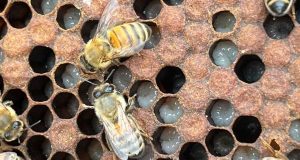
Pairing the current alcohol and soapy water washes, sugar shakes and sticky strips with laser beams, cameras, vibration detection and DNA testing, are just some of the options being looked at to help beekeepers to monitor their hives for varroa mite.
Delivered through Hort Innovation and led by Macquarie University, new research began last year to equip the horticulture sector with innovative methods to detect and control varroa mite as Australia settles into the management phase.
In the first phase of the Pollination Fund project Exploration of advanced control and detection methods for varroa mite (PH22002), scientists have reviewed new detection tools and methods that are being used across the globe, and are evaluating how effective their use would be in the Australian beekeeping context.
A comprehensive list of available monitoring techniques and tools for varroa mite is now available on the Hort Innovation website here. It covers key information for beekeepers on the suitability and effectiveness of the various detection methods, including materials required, percentage of varroa mite recovered, costs, time required, repeats required and any restrictions to use. A list of new monitoring techniques and technologies that could become available in the future is also under development.
NSW DPI has also developed a factsheet about varroa mite and Integrated Pest Management (IPM), which is available along with other information on IPM for beekeepers on the NSW DPI website here.
Macquarie University senior research scientist Dr Mary Whitehouse said the research team is now shifting its focus on to international research into varroa mite control, with an emphasis on non-chemical approaches.
“To this end, we will be holding a varroa mite workshop at Macquarie University in late January, where we will bring together our research team, overseas varroa mite experts, and a range of industry stakeholders including beekeepers and industry leaders from around Australia, to review the non-chemical control methods we have identified as potentially useful for Australia,” she said.
“We will discuss how they could be modified both to better suit Australian conditions, and to be a practical fit given Australian beekeeping demands.”




